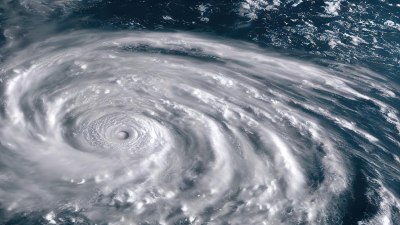The Hidden Dangers of a Perfectly Sunny Day
Explore the unexpected risks of sunny days, from UV exposure to heat-related illnesses.

Sunny days often evoke feelings of joy and a sense of relaxation. For many, it's the perfect time to engage in outdoor activities, basking under the sunlight while enjoying nature. However, beneath the bright skies and warm temperatures lie hidden dangers that may not be immediately apparent. This article delves into the unexpected risks associated with seemingly perfect sunny days, shedding light on how to enjoy them safely.
Understanding UV Radiation
One of the most significant threats of sunny days is ultraviolet (UV) radiation. The sun emits UV rays, which are classified into three types: UVA, UVB, and UVC. UVA rays penetrate the skin deeply, contributing to skin aging and increasing the risk of skin cancers. UVB rays are responsible for sunburns and have been linked to more direct skin damage, including certain types of skin cancer. UVC rays, on the other hand, are mostly absorbed by the Earth's atmosphere and do not reach us. Even on a cloudy day, up to 80% of UV rays can still penetrate, posing a risk to unwary individuals. Therefore, understanding UV radiation is essential for enjoying sunny days without compromising health.
Sunburn: The Immediate Consequence
One of the most common immediate consequences of exposure to UV radiation is sunburn. Symptoms can appear within a few hours of sun exposure and may include redness, swelling, pain, and blistering. Severe sunburns not only cause discomfort but can also lead to peeling skin as it heals. Additionally, repeated sunburns, especially during childhood or adolescence, can significantly increase one's risk of developing skin cancer later in life. It is crucial to apply sunscreen with a high SPF and to reapply every two hours to mitigate this risk.
Heat Illness: A Silent Threat
Another hidden danger associated with sunny days is heat-related illness, which may occur when the body's temperature rises to dangerous levels. Common conditions include heat exhaustion and heat stroke. Heat exhaustion is characterized by heavy sweating, weakness, dizziness, nausea, and fainting. If not treated promptly, it can escalate to heat stroke, a severe condition that can cause confusion, seizures, and loss of consciousness. Staying hydrated and taking breaks in the shade or indoors can help reduce the risk of heat-related illnesses.
Dehydration: The Quiet Risk
Alongside heat illnesses, dehydration is a silent danger that can occur during sunny days. When temperatures rise, the body sweats to cool itself down, leading to a loss of fluids and electrolytes. Symptoms of dehydration can include dry mouth, fatigue, dizziness, and reduced urine output. Severe dehydration can result in confusion, rapid heart rate, and even organ failure. To avoid dehydration, it's recommended to drink water regularly, even if you don't feel thirsty.
Allergies and Sun Exposure
For many, a sunny day can also bring about an increase in allergy symptoms. Pollen levels tend to be elevated on warm, sunny days, leading to discomfort for those with hay fever or other respiratory allergies. Symptoms can include sneezing, runny nose, itchy eyes, and headaches. It is advisable for allergy sufferers to monitor pollen forecasts and to limit outdoor activities during peak pollen times. Additionally, wearing sunglasses and a hat can provide some protection against allergens.
Skin Aging and Long-Term Exposure
Long-term exposure to sunlight can lead to premature skin aging, a process that manifests as wrinkles, age spots, and loss of skin elasticity. This accelerated aging is primarily due to the damage caused by UV rays, which break down collagen and elastin in the skin. While some sun exposure is essential for vitamin D production, it is important to balance it with protective measures such as using sunscreen and wearing protective clothing.
Wildlife Encounters: Insects and Animals
Sunny days often encourage more outdoor activities, which can lead to encounters with wildlife. Insect bites and stings are common risks, particularly from mosquitoes, ticks, and bees. Mosquitoes can transmit diseases such as West Nile virus and Zika virus, while ticks can lead to Lyme disease. Wearing appropriate clothing and using insect repellent can help mitigate these risks. Additionally, bee stings can trigger allergic reactions in some individuals, so caution is advised, especially in areas where bees are prevalent.
Sun Safety for Children
Children are particularly vulnerable to the dangers of sunny days due to their sensitive skin and tendency to spend long hours outdoors. To protect children, it is essential to apply sunscreen with a broad-spectrum SPF of at least 30, ensuring that it is applied at least 15 minutes before sun exposure. Parents should also encourage frequent breaks in the shade and provide protective clothing, such as wide-brimmed hats and UV-filtering sunglasses. Education about the importance of sun safety is key in developing lifelong habits.
Understanding the UV Index
The UV Index is a valuable tool in determining the risk of UV exposure on any given day. This scale ranges from 0 (minimal risk) to 11+ (extreme risk). The higher the UV Index, the more precautions individuals need to take to protect themselves from harmful UV radiation. Checking the UV Index before heading outdoors can help gauge the necessary sun protection measures to implement for the day.
Sun Exposure in Different Seasons
It is important to note that sun exposure is not limited to the summer months. UV rays can still penetrate the atmosphere during other seasons, including winter. Snow and sand can reflect UV rays, increasing exposure risk. Therefore, protective measures should remain consistent throughout the year, regardless of the season.
Conclusion: Enjoying the Sun Responsibly
Sunny days can be delightful, offering numerous opportunities for outdoor activities and enjoyment of nature. However, it is vital to recognize the hidden dangers that can accompany these seemingly perfect days. By understanding the risks associated with UV radiation, heat illnesses, dehydration, allergies, and wildlife encounters, individuals can take proactive steps to protect themselves and their loved ones. Embracing sun safety practices, such as applying sunscreen regularly, staying hydrated, monitoring UV levels, and dressing appropriately, will ensure that sunny days remain a source of joy rather than a hazard. Always remember that while the sun can provide warmth and positivity, it is crucial to approach sunny days with caution and awareness to fully enjoy their benefits.











